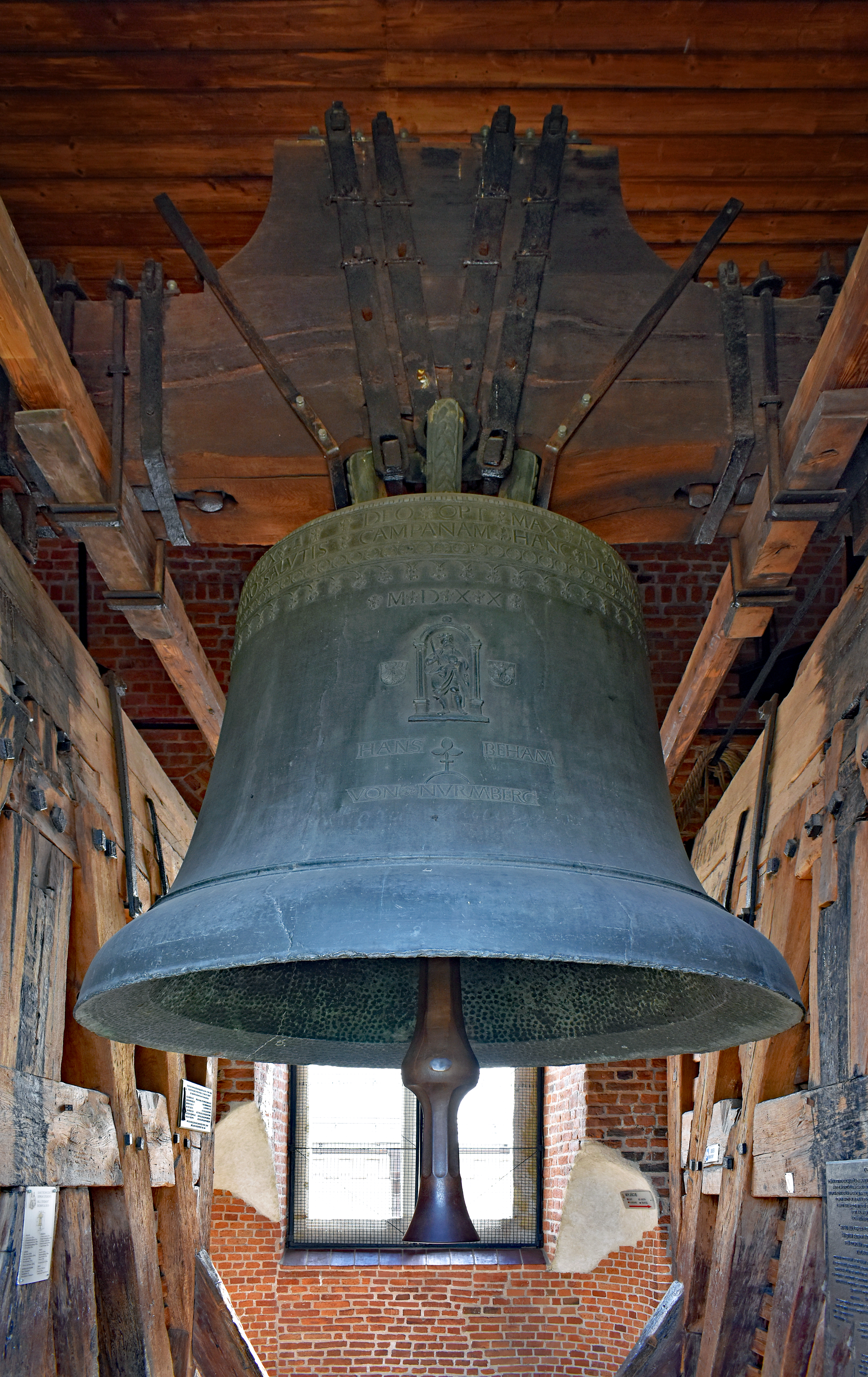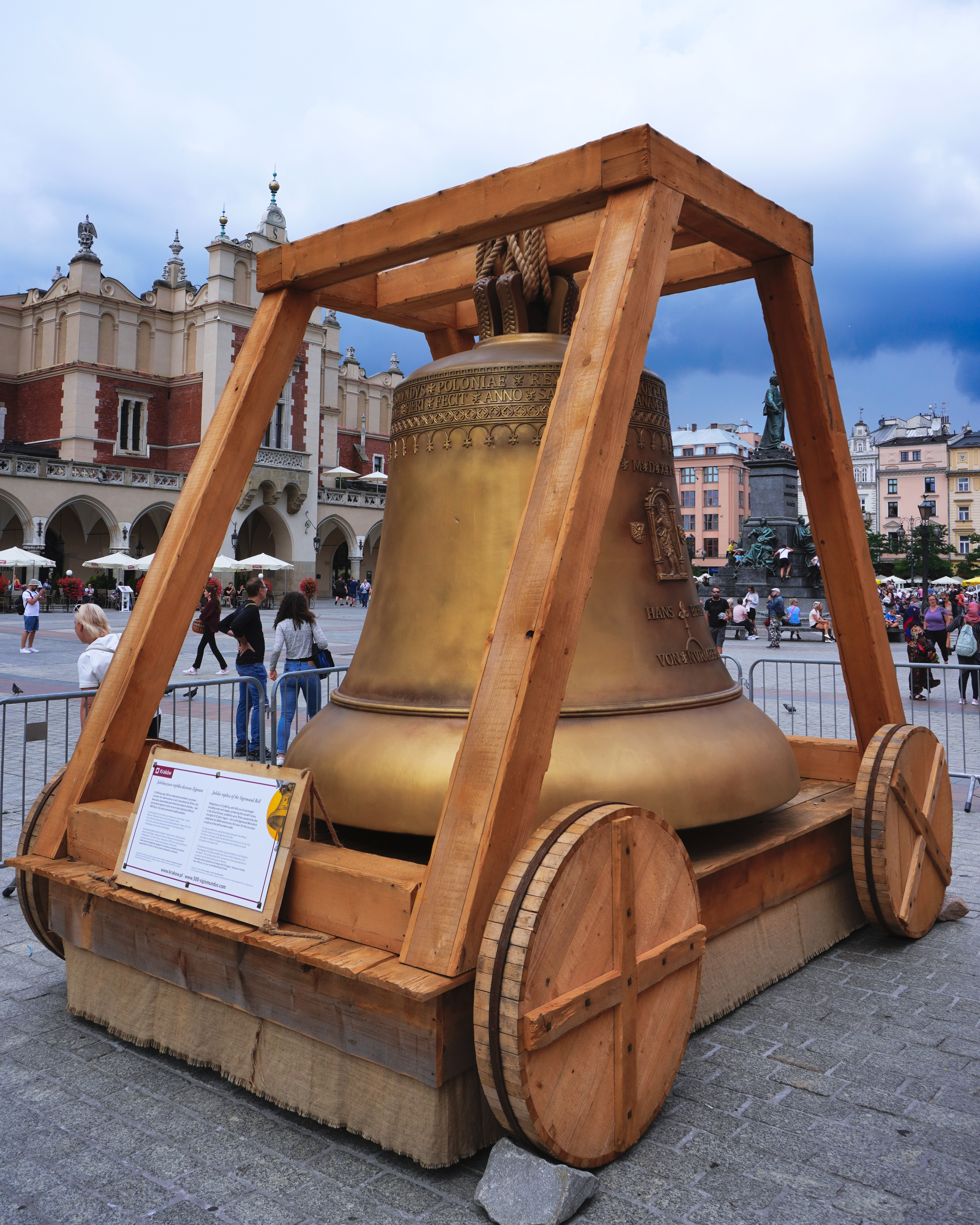


Among the many symbols of Krakow, undoubtedly the loudest, both literally and figuratively, is the Sigismund Bell (PL: Dzwon Zygmunt). It is one of the timeless classics of Krakow's tourist attractions from all over the world and one of the most important symbols of Polish history. It's worth paying some attention to it because this bell, due to its great size and perhaps its big heart, is ready to reward the interest shown to it twofold.

The Sigismund Bell, Kraków; Author: Zygmunt Put, CC BY-SA 4.0
The foundation of the bell is attributed to King Sigismund I the Old, who is said to have commissioned the work to his court bell-founder, Hans Behem from Nuremberg. What might have been the motivation for the Polish monarch? The creation of such a colossal bell, as we are talking about a bell that weighs over 11 tons, must have been connected to a particular occasion or circumstances. The most common, at least until recently, and, as research suggests, most likely incorrect version, mentioned a desire to commemorate the great triumph of Polish arms over Moscow in 1514. According to proponents of this theory, the Sigismund Bell was supposed to be cast from melted-down captured cannons taken from the enemy at Orsha. However, contemporary historians and custodians of the bell seem to lean towards a somewhat less militaristic origin. The bell was meant to be a royal gesture to commemorate and celebrate the birth of the king's son and heir to the throne - Sigismund Augustus. This is supported by the coincidence of the prince's birthdate and the casting of the famous bell. We are talking about the year 1520, in which both of the aforementioned events took place.
Interestingly, this great bell, cast by Behem, was not originally called the Sigismund Bell, regardless of which of the royal Sigismunds we consider as the original namesake. The first mentions of our today's hero referred to it as "Magna campana regia", which means The Great Royal Bell. This name is believed to have originated from a votive note in which the bell was dedicated to the protection of many saints, including the patrons of King Sigismund I himself. An inscription on one of the walls was supposed to attest to this, and it can be translated as follows:
TO THE BEST, GREATEST GOD, AND THE VIRGIN MOTHER OF GOD, AND THEIR HOLY PATRONS, THE ILLUSTRIOUS ZYGMUNT, KING OF POLAND, COMMANDED THIS BELL, WORTHY OF THE GREATNESS OF HIS MIND AND DEEDS, TO BE MADE IN THE YEAR OF SALVATION 1520.
In addition, two plaques on the bell depicted the personal patrons of King Sigismund I and his dominion. One portrayed St. Stanislaus, and the other showed St. Sigismund, the King of Burgundy.
However, soon the bell adopted the familiar and more concise name – the Sigismund Bell.

Replica of the Sigismund Bell, made on the occasion of the 500th anniversary of hanging the bell in 2021. Main Market Square, Krakow. Image credit: Mach240390, CC BY 4.0, via Wikimedia Commons.
Until recently, the Sigismund Bell represented an unrivaled achievement in terms of size and scale. It weighed, as mentioned, 11 tons, with its heart alone weighing 365 kg. The diameter of the bell's crown is approximately 242 cm, as is the height of the bell itself. These dimensions allowed it to enjoy the reputation of being the largest of Polish bells until 1999 when it was surpassed in size and weight by the Lichen Bell of the Blessed Virgin Mary.
The essence of the Sigismund Bell's uniqueness lies not in its dimensions but in when and for what purpose it is used. The tradition has been established that the famous Sigismund Bell rings only for significant events. Its debut was delayed until the victorious return of Polish troops and King Sigismund I from the Prussian War in 1521. Since then, the Sigismund Bell has enriched important events and days for the nation with its ringing.
It is also worth mentioning Sigismund's broken heart. Despite its monumentality and being cast from everlasting bronze, it is vulnerable to the passage of time. It so happened that, like many valiant and illustrious men in the prime of life, the bell's heart could not withstand the test of time. It served for over 479 years, striking approximately 12 million times during that time. However, in the 19th century, it cracked three times, but it was successfully repaired. The last time it rang was on Christmas 2000, and that's when the fourth crack was discovered. It was decided to replace the heart, which was accomplished on April 14, 2001.

The old heart of the Sigismund Bell on the half-floor of the Sigismund Tower at Wawel; Adrian Grycuk, CC BY-SA 3.0 PL, via Wikimedia Commons.
The Sigismund Bell is undoubtedly a symbol of Krakow, and every respectable tourist will sooner or later have to see it when visiting the royal city on the Vistula. However, in addition to admiring its apparent size, it is worth getting to know its history and significance more closely. Our guides, who know almost everything about Krakow (https://oprowadzamy.pl/pl/home/), can help you with this. It's worth letting them guide you through the streets of Krakow into the heart of the city and its history.